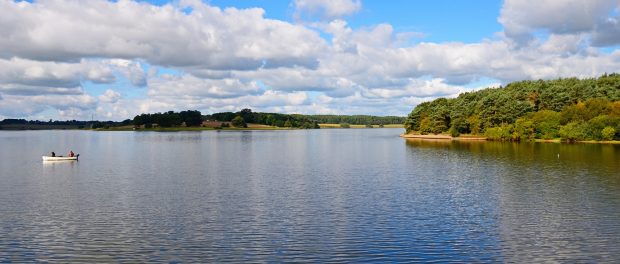Is there an end in sight for water scarcity?

Attributed to: Matt Clarke, Director, Boyer (an LRG company)
To meet housing targets, it is imperative that the challenging issue of water scarcity is fully and effectively addressed. And so it is encouraging there have been substantial steps forward in doing so, including a more proactive and enabling approach to the determination of planning applications for development. However, it would perhaps be misleading to suggest that the issue has disappeared entirely.
In Cambridge, water scarcity had held up significant strategic developments and many thousands of social housing units. As recently as last March the government acknowledged that over 9,000 homes and 300,000m2 of commercial space were unable to proceed through the planning system due to the Environment Agency’s intervention. In the subsequent year the majority, if not all, of this capacity had been released via a variety of channels, including Secretary of State appeal decisions and positive multi-agency action – the formation of the Water Scarcity Group, announcements on funding of water supply infrastructure and a proposed Water Credits System.

Matt Clarke, Director, Boyer (an LRG company)
Having acted for Waterbeach Development Company on its planning application in South Cambridgeshire, Boyer was delighted when, late last year, 4,500 homes (including up to 1,350 affordable properties) at Waterbeach New Town East were granted outline planning permission following withdrawal of the Environment Agency’s previous objection.
So, on one hand, it does appear that this significant obstacle to meeting housing need, and progress of site allocations in adopted Local Plans (in the Cambridge area at least) has been overcome. The government’s efforts to remove this hurdle appear to have also established a framework (through a package of measures) for future development that can contribute to meeting its aspirations for enhanced growth along the Oxford-Cambridge Arc, and at Cambridge in particular.
It is evident that, as part of the solution, developers have needed to commit to more stringent water usage standards, as low as 89 litres per person per day in some instances. This could be seen as a positive development, driving innovative design responses, although clearly there needs to be careful consideration given to the increased cost and viability implications of increasingly challenging restrictions.
In December the Environment Agency published A summary of England’s revised draft regional and water resources management plans, within which the scale of the on-going challenge of water scarcity is outlined. It states that by 2050 there will be a shortfall between the sustainable water supplies available and expected demand of nearly 5 billion litres of water per day. So in places such as Sussex, Cambridgeshire, Suffolk and Norfolk where issues have already been experienced, there is an urgent need for action to ensure future supplies are more resilient, and this must be demonstrated and assessed through water resources management plans.
The Environment Agency report provides examples of some effective channels for directing of funding and resources, including the anticipated completion of Havant Thicket, England’s first new reservoir in over 30 years. This is one of ten planned new reservoirs, alongside other major supply-side infrastructure projects including inter-company water transfers and new water recycling and desalination schemes. A drive for accelerated roll-out of smart meters to enable improved monitoring (which will allow better leakage detection) as well as driving more considerate consumer behaviour, also features prominently.
In addition, the Planning and Infrastructure Bill, which had its First and Second Readings in the House of Commons in March, could provide crucial practical improvements of direct relevance, not least through the objective of delivering a faster and more certain process for critical infrastructure through streamlined Nationally Significant Infrastructure Projects consultation requirements. Other aspects, such as introducing a more strategic approach to nature recovery, could also assist in addressing environmental impacts through a new Nature Restoration Fund which, the government claims, could offer a win-win situation for both housing growth and nature.
So, in summary, whilst the issue has clearly not gone away, a combination of planning reform and more proactive infrastructure planning appears to be in train, in an attempt to ensure that the recent and frustrating delays to the delivery of much needed housing can be avoided in future.

